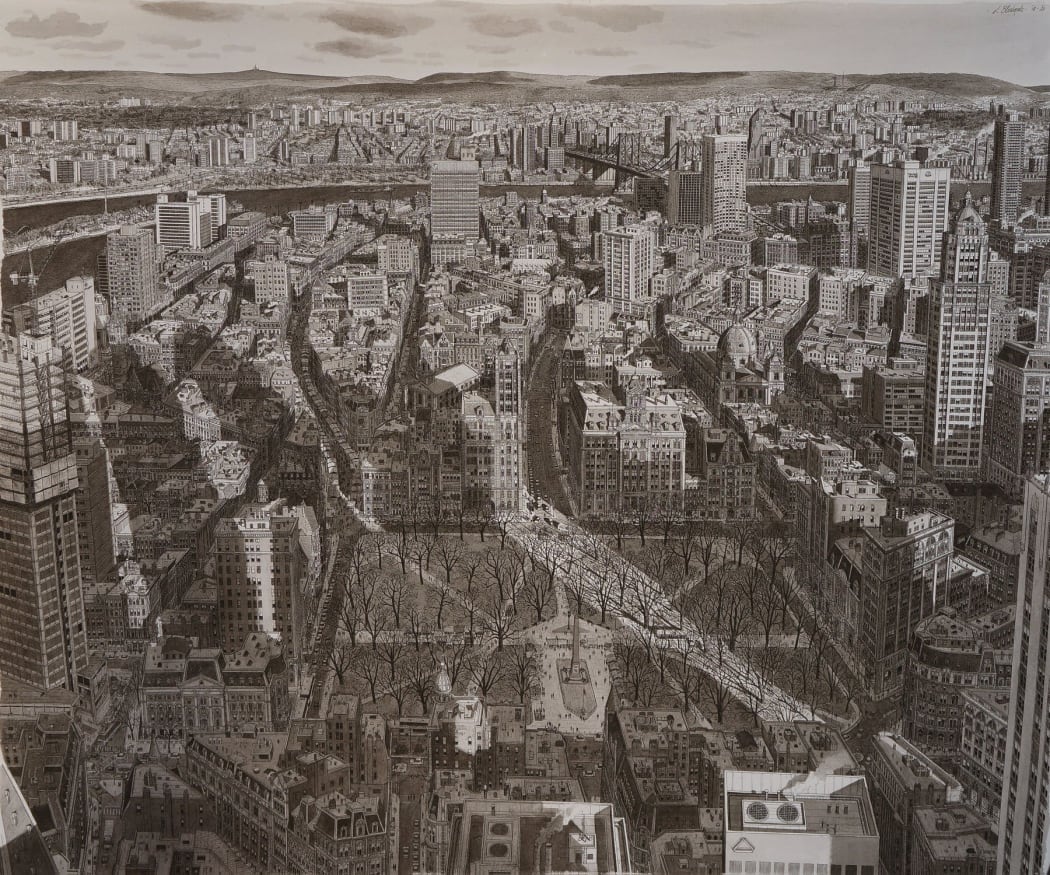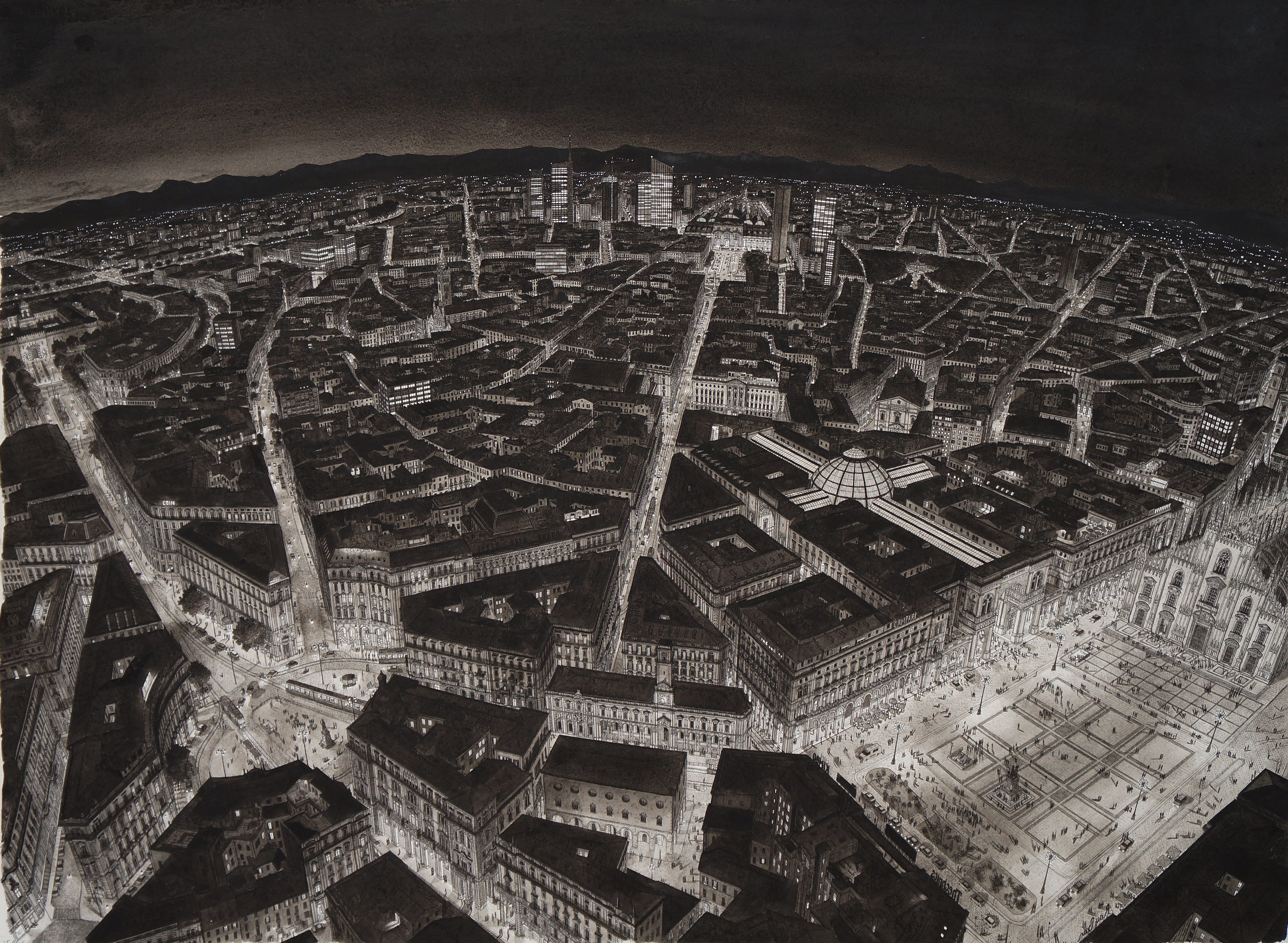
Stichting Kunstweek has awarded Stefan Bleekrode (34) the honorary title 'Talent of the Year 2021'. What a great way to move forward from 2020! When defining an artist's talent, several criteria come into play: skills, technique, uniqueness, creativity, and aesthetics. Bleekrode has it all. Stefan produces two types of work: his trademark cityscapes and his works in colour (watercolours and oil paintings). His cityscapesare carefully rendered Indian ink drawings, seen in a birds-eye perspective, and are inspired by his many trips abroad. His works in colour recall specific memories, contemporary snapshots, mostly from American society, without any artifice or sublimation, just real life. For the occasion, we have interviewed Stefan on his life as an artist.
So Stefan, let's start from the beginning. You've been drawing from a very early age, how did it all start?
At first, I had a passion for architecture. But I also loved mountains, comics (Tintin, Asterix and Obelix), ships, and films. Actually, I enjoyed a vivid and rich imagination as a child. From the age of 7 or 8, I started to use my drawing skills to express and study my interests.
Around the time I went to high school, I recall becoming interested in the Italian Renaissance which subsequently led to a general interest in art. I didn't immediately make the link between art and my own drawings. It was not until a few years later that it reflected in my work.

And how did people around you react to your drawings at the time?
The response I got varied. Most of them were neutral, some of them were positive, but to be honest I wasn't really interested in hearing other people's opinion. I was drawing for myself and I considered each piece as an exercise for the next one. I was my own toughest critic. Even though compliments from others touched my ego, I had the feeling that receiving too much of them would affect my work since I would no longer feel the need to improve.
After graduating from high school, you decided to follow an art academy, how did that go?
First I went to St. Joost in Breda, but I didn't like it. It claims to be an art academy but everything about it was anti-art to me. Art wasn't taught there. Rather, they were outspokenly anti-beauty, anti-craft, anti-integrity, you name it. So after three months there, I quit. I then went to London and studied there for a short time at Wimbledon College of Arts. However I spent much of my time away from school in the museums, studying their collections and sketching on site. I was also fascinated by the city itself, something which is clearly visible in my work from 2006 to 2008.
Now you are an accomplished artist, what is your working method?
I start off with a simple idea, usually it's inspired from trips abroad or composed of several older ideas. I often compose an image. After I've worked out the composition and the perspective in pencil, I continue with the ink drawing. Finally I add shading and light effects with watercolour and that's it. I don't care how long it takes, it's about creating the image I have in my head.
Travelling is thus part of your work process, do you have a fun fact about one of your trips?
I travel a lot indeed, actually my work as an artist is much more varied and adventurous than I had ever imagined. For example, this summer I painted on a 3300 metre high mountain in Switzerland. I dragged all my painting material up there with me.
What do your typical workdays look like ?
I wake up around 7, have breakfast, then I start drawing at 8. Usually I draw until noon. After lunch I paint a few hours. Sometimes I take a break for a work out or a bicycle ride. Before supper I often read and after dinner I go back to work until eleven o'clock.
What goals do you still want to achieve?
I would love to have a retrospective exhibition at the Tate, the MoMA, or another big museum with such a reputation. When it comes to the goals you want to achieve in life, for me only the highest counts. Aiming for what is achievable will inevitably lead to mediocrity or worse, decline.
How would you describe yourself as an artist?
I don't see myself as an artist but rather as a drawer and painter: a craftsman. A craftsman who puts craftsmanship and talent at the service of depicting concrete impressions from reality.
If you could meet one artist from the past, who would you chose?
Honestly none, I prefer looking at their work. When you read all those biographies, you notice most of them were obnoxious, difficult, frustrated people who suffered from all sorts of complexes they only managed to control through their art. Just look how often their obsessions, desires and traumas are central themes to most artists, especially since the second half of the 19th century. But thanks to this, we can now enjoy incredible art.
And finally, how would you want to be remembered in the future?
I think people will wonder what on earth possessed him to put so much time and effort into these drawings. But they already do so when they see my work now.
The Talent of the Year 2021 will bloom further as a talent for many years to come.

Milan at night

September Sunset, 2015-2016

